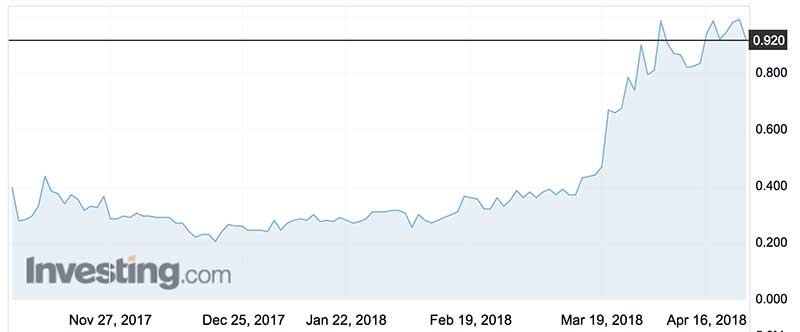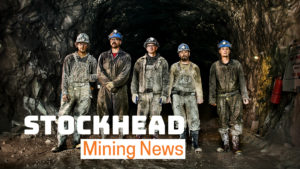Tando Resources boss knows the recipe for ASX success

Pic: John W Banagan / Stone via Getty Images
Tando Resources managing director Bill Oliver is the head of two junior explorers in the battery metals space that have witnessed impressive share price growth in recent months.
Vanadium explorer Tando (ASX:TNO) which only debuted on the ASX in November last year has jumped over 180 per cent in that short time.
Already the price of vanadium has rocketed 550 per cent in the past three years which is why Tando is moving to position itself as a supplier.
Mr Oliver’s other company, Celsius Resources (ASX:CLA), has skyrocketed over 500 per cent in the past year on success, including a recent 112-million-tonne maiden resource, at its cobalt project in Namibia.
But he knows better than most that it takes more than just buying a project in a hot commodity to become a successful resources player.
Mr Oliver has 20 years of experience in the international resources industry working for both major and junior companies.
He has led large scale resource definition projects for Rio Tinto and previously worked in near mine exploration/resource definition roles for Harmony Gold, Bellamel Mining and BC Iron.
More recently, Mr Oliver was the managing director of Signature Metals, responsible for taking the Konongo gold project into production within two years of acquisition and growing the company from a market cap of $6 million to a transaction where it was valued at over $50 million.

According to Mr Oliver, it takes three things to be successful: being in a commodity that is high in demand (like battery metals), having good quality assets and not resting on your laurels.
“There’s no incentive for anybody if you grab a project and then sit on it,” he told Stockhead.
“You have to add value to it especially as the world is changing and as these commodities are becoming more in demand you need to be advancing your project so that they are able to meet that demand.”
In March, Tando got its hands on a high-grade vanadium project in South Africa estimated to host a resource three times bigger than similar projects.
And the company isn’t wasting any time in getting on the ground in South Africa, which is one of three major global vanadium producers.
Just two weeks after announcing the acquisition, Tando revealed it had already taken samples of several outcropping magnetite “pipes” that are up to 300m long and traversed a substantial portion of the 3km strike of magnetite layers which host the vanadium mineralisation.
“I think the key is to fast track the project towards production and potentially add other projects in the same space,” Mr Oliver said.
“I think as a resources industry, we’re going to be heavily dependent on technology. I think it’s quite key for the resources industry to get quite close to those developing new technologies and as they move those into everyday usage seek to fill the demand for materials that will arise.”
At the moment, about 90 per cent of global vanadium production is used to make high-strength steel. But future demand stems from its role in vanadium batteries, which can store more power and last much longer than lithium batteries.
While lithium batteries have enjoyed a first-mover, economies-of-scale advantage, vanadium redox flow batteries (VFRBs) are carving out their own market in off-grid, deep-power cycle applications worldwide.
- Bookmark this link for small cap breaking news
- Discuss small cap news in our Facebook group
- Follow us on Facebook or Twitter
- Subscribe to our daily newsletter
“Strengthening steel is very topical globally to improve the quality of construction. So the demand for vanadium in steelmaking is very, very strong and then you’ve got this future battery demand, which really is not factored in to any of the current supply equations,” Mr Oliver said.
“There are very few people that are supplying vanadium electrolyte – battery-grade vanadium – for use in energy storage systems and as the usage of vanadium redox flow batteries increases there will be increased demand for it.”
Projections estimate new demand of 300,000 tonnes of vanadium coming online over the next few years because of VRFBs – more than three times what is currently produced.
To put that in a battery context, 145 grams of vanadium pentoxide per litre is needed to make a VRFB. For a 1.6MWh battery you’d need 15 tonnes — hence the shortage fears.
Meanwhile, Mr Oliver also sees copper, nickel and rare earths being hot commodities as the electric vehicle market continues its rapid growth.
“One thing that has been a sleeping giant is copper and nickel demand for electric vehicles,” he said. “There is a supply drop off in coming years.
“I also think rare earths, heavy rare earths especially, which are needed in magnets used in electric vehicles is certainly one to keep an eye on. It will be interesting to see if that demand picks up.”
This special report is brought to you by Tando Resources.
This advice has been prepared without taking into account your objectives, financial situation or needs. You should, therefore, consider the appropriateness of the advice, in light of your own objectives, financial situation or needs, before acting on the advice.
If this advice relates to the acquisition, or possible acquisition, of a particular financial product, the recipient should obtain a disclosure document, a Product Disclosure Statement or an offer document (PDS) relating to the product and consider the PDS before making any decision about whether to acquire the product.
UNLOCK INSIGHTS
Discover the untold stories of emerging ASX stocks.
Daily news and expert analysis, it's free to subscribe.
By proceeding, you confirm you understand that we handle personal information in accordance with our Privacy Policy.








